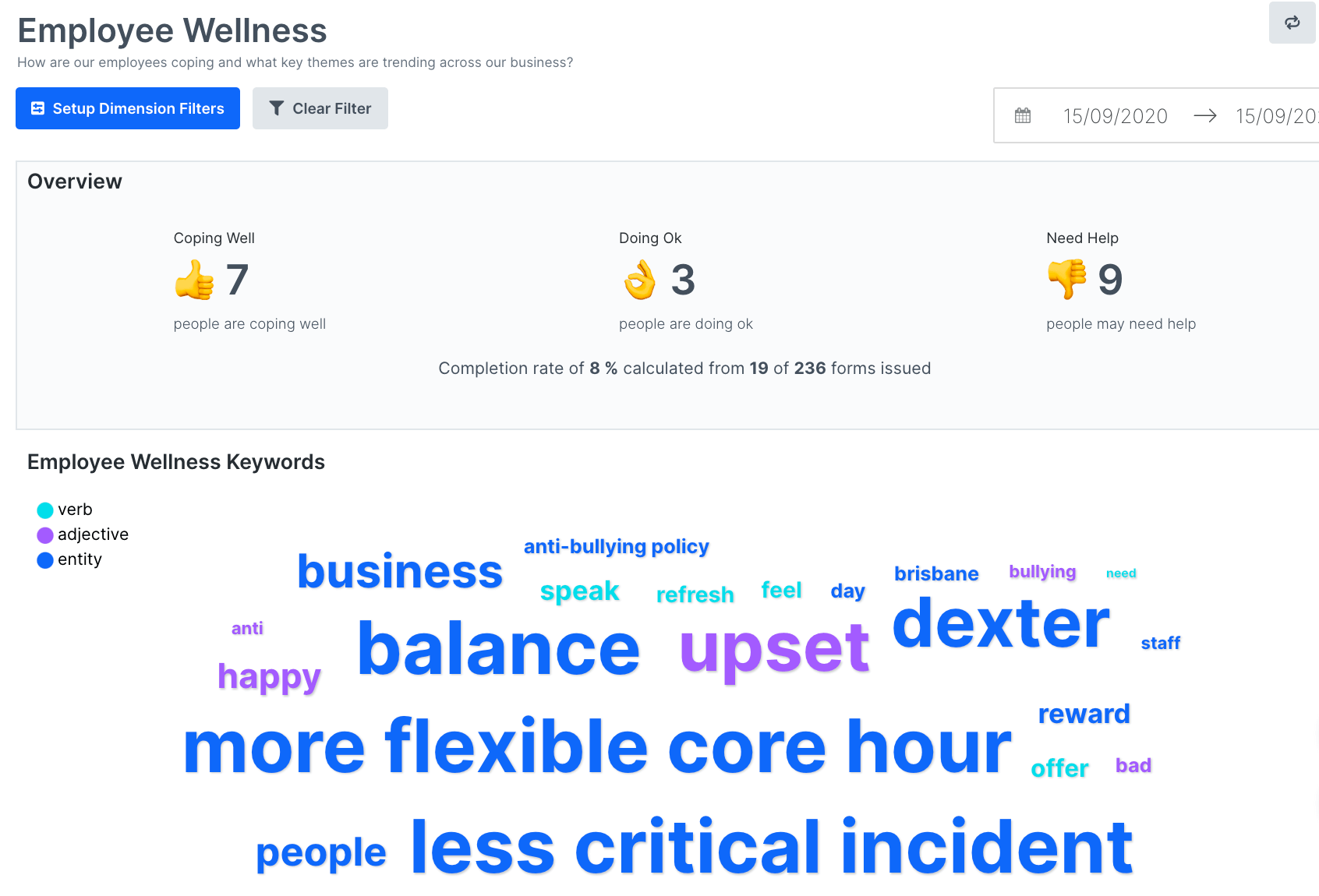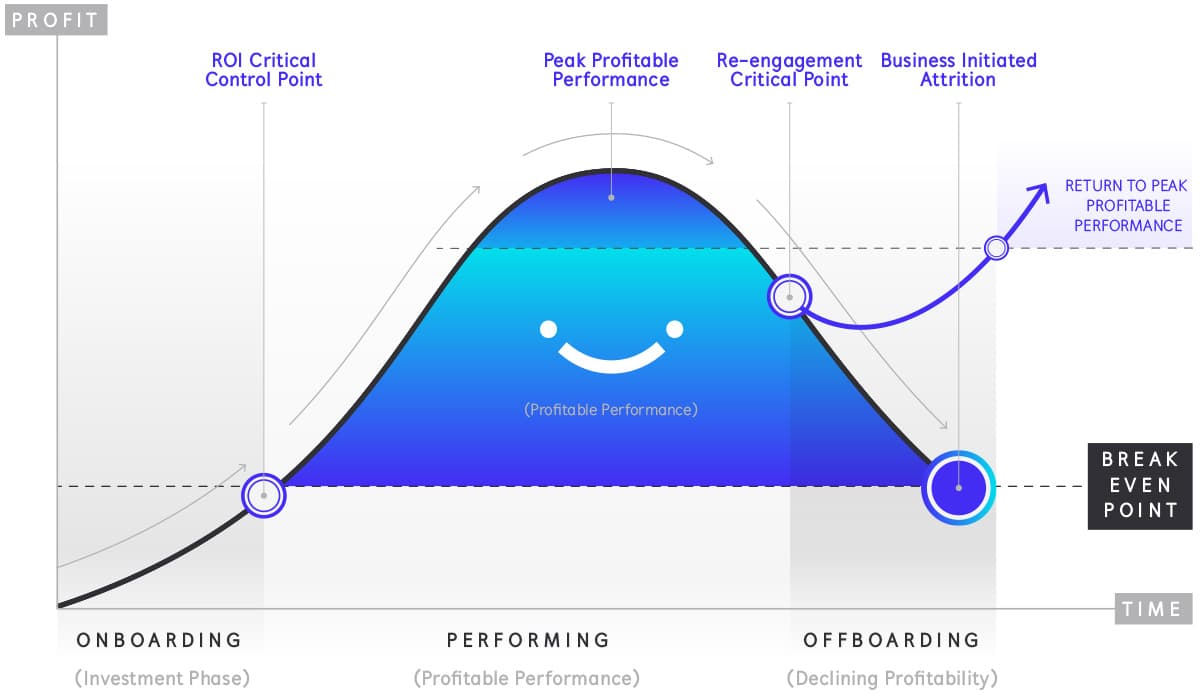4 Ways To Use People Analytics To Build A Great Place To Work
For many HR practitioners, the words “data” and “people analytics” likely conjure visions of finicky formulas, slow spreadsheets, and huge headaches. But we’re here to tell you that they’re nothing to be afraid of, and, with the right tools, analytics could change every employee’s (work) life.
Why? Because understanding and investing in your people help you build a better place to work, leading to happier, more productive, and successful employees, bosses, and businesses.
People are the biggest expense on your profit and loss, but they’re also your greatest asset to deliver revenue and returns. Investing in your people is the best way to invest in your customers and the growth of your organization. ~Rob Bromage, intelliHR CEO
Defining People Analytics
A few different terms get thrown around when talking about tracking, measuring, and reporting on all things people. Although this can (and often are) used interchangeably, they can also be broken down across the following categories:
- Workforce analytics: Payroll, time, absenteeism, attendance, and other workforce management processes.
- People analytics: It includes the above items and focuses on individual-level attributes and data such as psychometrics, performance, and well-being.
- Human capital analytics: It is a discipline that quantifies people as an asset that can be managed and improved to increase business performance.
- HR analytics: It works with all of the above from an HR perspective.
Which Metrics Should You Track?
While there are hundreds of workforce, human capital, people, and HR metrics you can track, what it boils down to is being able to find answers to two key questions:
-
Are we doing well?
-
Are we a great place to work?
If your answer to the first question isn’t quite what you’d like it to be, then your answer to the second question might shed some light on why that’s the case.
But how do you know if staff enjoy coming to work? Ask your staff questions, collect data, and measure things that correlate with being a great place to work.
4 People Analytics To Track And Measure
1. Understand Engagement And Culture
Culture is one of those things that’s difficult to define and almost impossible to measure. However, asking your staff questions about their attitudes towards work and the company will give you a pretty good indication of where your culture is at. You can easily do this through things like eNPS and employee engagement surveys and pulses.
If you already conduct an annual engagement survey, this will give you an idea of culture at that single point in time but won’t give you any information on trends or changes in culture over time.
As engagement can fluctuate greatly throughout the year depending on seasonality, business objectives, as well as a team and role-related factors, we recommend checking in more frequently than every twelve months.
-
Ask engagement questions (e.g., How happy are you in your role?) as part of your Continuous performance management, in a regular, monthly performance or wellbeing check-in (more on these in No. 2).
-
Conduct an eNPS (e.g., How likely are you to recommend this company to your friends or family) quarterly.

Fig: With intelliHR’s people analytics, you can track and understand your employee engagement and well-being.
Using people analytics to help you track employee engagement and culture over time will enable you to identify dips or issues more easily, protect your culture, and take action when it counts (not once a year).
2. Support Mental Health
With 41% of employees reporting feeling stressed, burned out, or depressed at work, costing up to $1 trillion each year in lost productivity, work and workplaces have a huge impact on employee mental health.
So if you want to know if you’re a great place to work, understanding and improving mental health in the workplace needs to be a top priority.
How can people analytics help you do this?
Sending regular employee pulse surveys that ask employees how they are feeling is an excellent way to gauge mental health, find out how to support staff who might not be coping, and show your employees that you care.
People analytics can highlight the teams, business units, departments, or locations your staff might be struggling with and tailor strategies or actions accordingly.
For example, suppose you see that your engineering department – who are majority remote workers – have lower well-being than other departments. In that case, you might need to design programs to support and engage remote workers specifically.
3. Increase DE&I
Diversity, equity, and inclusion in the workplace (DE&I) is no longer just a buzzword. It’s an essential part of any company’s organizational and recruitment strategies. More diverse workplaces are proven to be more productive, successful workplaces.
Let’s take a look at some statistics:
- Diverse companies enjoy 2.3 times higher cash flow (Bersin by Deloitte).
- Racially diverse companies have 15 times higher sales revenue (Science daily).
- Inclusive companies are 1.7 times more innovative (Bersin by Deloitte).
- Workplaces with strong “diversity climates” are linked with increased job satisfaction and commitment (McCallaghan et al.)
In the US, the SEC has introduced new regulations for human capital reporting, which incorporate D&I metrics. Being able to track, measure, and report on diversity is more crucial now than ever before.
For example, it might be useful to report on the following people analytics:
- Race and ethnicity
- Gender identity and expression
- Sexual orientation
- Age
- Disability
- Culture
- Religion
- Marital status
Once you have data on the above, you can explore it at deeper levels to track things like pay equity across different groups, leadership diversity, recruitment sources, and more. It will give you a good indication of where your organization is doing well concerning diversity and where you might need to do some work.
4. Reduce Turnover
Sometimes, if an employee is underperforming or not the right fit for the organization, it can be good if they decide to exit the business.
More often than not, however, turnover consists of high-performing, valuable staff and is thus termed “regrettable turnover. It is because these workers are not only expensive to replace (costing between 6-9 months of the employee’s salary), but they also leave a big gap in your business in terms of lost knowledge and lost productivity while the new person gets up to speed and becomes profitable. Depending on the role, this can take up to a year.

As one of the highest costs to an organization, understanding what’s driving turnover is essential to understand improvement areas in your business.
People analytics can help you to measure and report on:
- Exit drivers (conduct offboarding exit interviews to gather this data)
- Turnover by tenure, pay grade, gender, recruitment source, and more
- Turnover type (voluntary/involuntary, retirement/resignation etc)
- Employee satisfaction (and link this back to turnover)
- Cost of turnover

Fig: Visualize attrition and understand what’s driving turnover with intelliHR’s attrition report.
Read Next: Complete guide to turnover and attrition
What Next For People Analytics?
Do you want to truly understand your people and make people-centric decisions based on data, not guesswork, gut feeling, or hours of data analysis? intelliHR’s HR software and advanced AI-powered analytics capture, store, and analyze your people's data, providing real-time insights into the employee lifecycle, engagement, performance, and culture, helping you to build a better place to work. Get in touch to learn more.

















